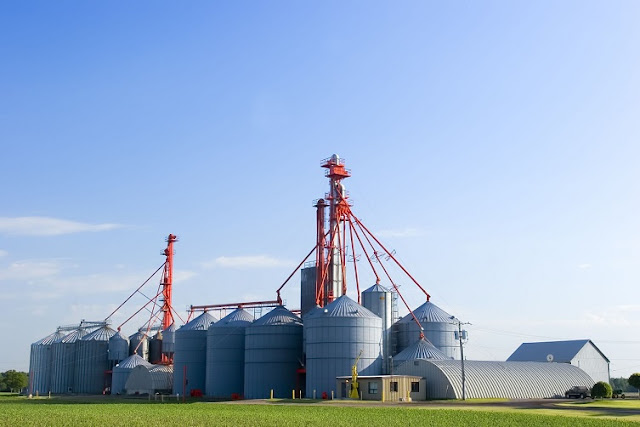When it comes to long-term grain storage, it’s no secret that maintaining the ideal temperature throughout the year is of paramount importance. With global warming causing more unpredictable weather patterns, being prepared is very necessary to maintain a high quality of grain. This article will discuss a few of the issues.
Overcoming Problems of Grain Storage
Most types of grain need to be kept in cool, dry environments, which is why silos and grain storage rings are so widely used. Studies suggest that dry grain should be cooled to between -5 to 0 degrees prior to harvest in the winter time. As the climate becomes colder, grain needs to be stored in an even cooler environment, so while it’s arguably more favorable to store grain under colder weather conditions, precautions still do need to be taken.
Hotter conditions present problems of their own. For one, grains need to be kept moisture-free, so poor management of grain in humid weather can lead to mold growth, which obviously reduces quality. This is a problem particularly with grain that has just been harvested. Modern processes of grain drying, including aeration (using airflow to dry and cool grain), are the obvious solution in these cases.
In the winter time, keeping grain at lower temperatures can reduce the likelihood of insects getting involved, as they are usually at a different state than normal at sub 10 degree Celsius. However, there are problems with grain drying under these circumstances for certain grains, given that condensation can form as a result.
Furthermore, while the air temperature outside can be cold, studies indicate that on sunny days the solar factor can come into effect. When exposed to the sun for long periods, grain on the inner outer walls of the bin can be heated and end considerably warmer than is ideal.
Precautions
As mentioned, the main problems that can affect grain storage are related to moisture levels, temperature and insects/birds that may get inside. Here are a few ways of overcoming these issues.
Check grains and temperature levels weekly
 |
| Image Source: www.ohioinsurance.org |
The main means of overcoming these is proper monitoring on your part to ensure that the temperature is at the appropriate level. Inspect the bin and the temperature gauge, start the fans - if the air feels humid, which is possible under these conditions, running the fans may be an option. Most importantly, you should check humidity and temperature at various locations as this can differ from one spot to another.
Do Not Use Fans During Rain or Fog
It's recommended to refrain from using fans when weather conditions are poor, mainly because there is a high risk of blowing more moisture into the bin, which is exactly the opposite of what you’re trying to do.
Cover Fans And Ducts Once Grain is Cooled
Winter is unpredictable at the best of times, and even more so in certain parts of Australia. Once the grain is cooled and is ready for long term storage, you need to ensure that the bin is well sealed and weather-tight. If you fail to do so, heavy rains, hail, or even snow could enter the bin and cause huge problems. This also ensures rodents and other small animals don’t find their way in (they tend to be more likely to do so when food is harder to find during winter).
As mentioned, careful monitoring on your part is hugely important and should not be overlooked. For more information, feel free to contact the team at Advantec, who provide a range of grain storage solutions, handling equipment and advice to those in need.

